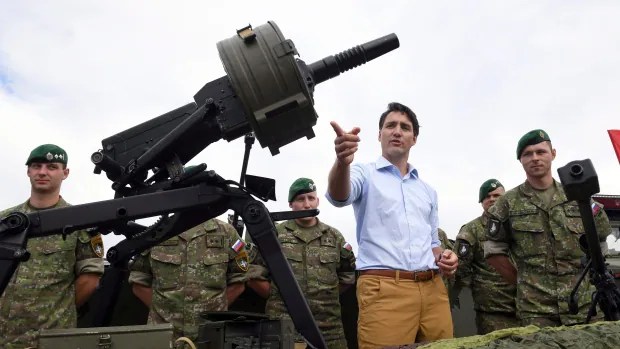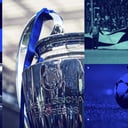During the 1992 European Championship in Sweden, UEFA was given the first glimpse of the future. The Champions League, a bold rebrand of the prestigious European Cup, was months away from its launch and the governing body’s executive team were gathered to picture how their new flagship competition might look.
“I’ll never forget taking those brand sketches to Lennart Johansson (UEFA president) and Gerhard Aigner (chief executive),” Craig Thompson, the former managing director at TEAM Marketing, tells The Athletic.
“We sat looking at the designs and then at each other. Everyone said immediately: ‘That’s it’. You never have that when creating a brand because everyone’s got an opinion. But everyone was in agreement. The stars represented the best players and teams in Europe, all coming together for football.”
The star ball logo, created by London-based designer Phil Clements, was to form the central pillar of the Champions League brand and, 32 years later, remains largely untouched. Instantly recognisable, it has become synonymous with the most coveted competition in club football, one that has helped drive UEFA’s annual revenues above €4.3billion (£3.63bn; $4.76bn).
The Champions League is changing this season, introducing a 36-team league phase, but the strength of its brand has never been more obvious. It has become the competition the elite clubs covet, effectively projecting prestige and aspiration.
It is not for everyone, as those who devised a breakaway European Super League (ESL) might attest, but the climbing TV deals and commercial income illustrate a global appeal that UEFA could not have envisaged at its inception.
There is enormous power in the brand, bringing money to the kitty — buckets of it. Clubs competing in this season’s expanded competition are forecast to share a prize pot totalling £2.08billion, a 22 per cent rise on last season.
Perhaps only the Premier League can rival the Champions League’s growth, but even they struggle to compete on image. The omnipresent star ball, the classical lettering font, the anthem heard a thousand times. The last three decades have seen it all added to football’s lexicon.
“They’ve created a brand where we’re seeing the best of the best,” says Hugo Hensley, head of sports services at Brand Finance, a leading brand valuation and strategy consultancy. “It gets all the attention and that brings desirability where the clubs are all obsessed with winning it and that brings more broadcasting, sponsorship, money. That means it keeps becoming this bigger event, bubbling up and up.”
GO DEEPER
How the Champions League was created – told by those who did it
Nothing illustrates the exponential success of the Champions League brand like the numbers.
In the inaugural 1992-93 competition, the total prize pot was 38million Swiss Francs (roughly £34m at current rates), with eventual runners-up AC Milan taking the biggest chunk at 7.5million Swiss Francs (£6.7m). Given this season’s winners could walk away with £136m, it is a 20-fold rise in 32 years.
Highest-earning clubs in the Champions League
| Season | Club | Earnings |
|---|---|---|
|
2006-07 |
AC Milan |
€39.9m |
|
2007-08 |
Man Utd |
€42.9m |
|
2008-09 |
Man Utd |
€38.3m |
|
2009-10 |
Inter Milan |
€49.2m |
|
2010-11 |
Man Utd |
€55.5m |
|
2011-12 |
Chelsea |
€62.9m |
|
2012-13 |
Juventus |
€67.1m |
|
2013-14 |
Real Madrid |
€60.4m |
|
2014-15 |
Juventus |
€89.1m |
|
2015-16 |
Man City |
€83.8m |
|
2016-17 |
Juventus |
€110.4m |
|
2017-18 |
Real Madrid |
€88.6m |
|
2018-19 |
Barcelona |
€117.7m |
|
2019-20 |
PSG |
€126.8m |
|
2020-21 |
Chelsea |
€119.8m |
|
2021-22 |
Real Madrid |
€133.7m |
|
2022-23 |
Man City |
€134.9m |
The last two decades, in particular, have seen the value of the Champions League spiral. Commercial rights revenue has climbed from £114m a season in 2004-05 to £507m in 2022-23. Broadcast revenues, meanwhile, have rocketed from £410m to £3bn in the same period.
And they will only increase when UEFA next shares its figures. A new three-year TV cycle will see TNT Sports and Amazon Prime combine to hand over £1.4bn for the UK TV rights, while the American rights, considered a boom market for European football, will be worth $250m (£190m) a season over the next six years, up on the previous $100m a season.
Broadcasting deals essentially amount to a measure of popularity and the Champions League’s lustre has them queuing up in all markets.
“While the World Cup is still the biggest event globally in terms of viewership, the club game has far outgrown the international game in terms of engagement and commercial power,” says Dan Haddad, head of commercial strategy at Octagon, a sports, music and entertainment agency.
“The Champions League now has a unique place in the football calendar. It’s the one property where all the elite clubs are competing.
“The evidence of its success is that nothing else has come along to challenge it or replace it. The whole concept of it was what led to the Super League discussion. The owners of these clubs thought a version of it, where elite European clubs regularly compete with each other, was the way to go.”

Television rights for the Champions League have rocketed (Adrian Dennis/AFP via Getty Images)
UEFA cut off that threat at the pass. Twelve of Europe’s biggest clubs signed up to the ESL in April 2021, believing there was greater control and financial rewards to be found in a breakaway competition.
That revealed a level of vulnerability for UEFA, with Real Madrid and Barcelona still agitators from within, but the Champions League has retained its position at the top of the mountain for now after grand plans crashed and burned inside 72 chaotic hours.

“FIFA are trying a bit of a land grab with the Club World Cup,” Haddad says. “They’ve realised that without having an anchor property within the elite club game, your commercial growth is going to be limited.”
Independent data collected by Brand Finance indicates the Champions League is the most followed club competition in the world and is also the one most commonly associated with having world-class teams, scoring higher than the World Cup, Premier League, Formula 1 and NFL.
The Champions League might have needed to repurpose the European Cup’s storied history in its early years, but now it has built its own back catalogue — think Zinedine Zidane’s volley at Hampden Park in 2002, Manchester United’s Camp Nou comeback three years earlier and all those glories of Lionel Messi and Cristiano Ronaldo. It has become the trophy to mould the legacies of greats.
Zinedine Zidane’s exquisite volley handed Real Madrid #UCL glory for the ninth time, #OTD in 2002.
What a way to decide a Champions League final.
🎬 @btsportfootball pic.twitter.com/4ht0nkAGAV— The Athletic | Football (@TheAthleticFC) May 15, 2023
“Within football, the only thing more followed is the World Cup,” says Hensley. “That’s not just Europe, we research the United States, Brazil, China, India and Australia. It’s 83 per cent of football fans are following it, which is pretty amazing. The World Cup is at 92 per cent, which is exceptional.
“The only real one next is the Premier League. You’ve got things like a World Cup, the Olympics, even something like Wimbledon. They aren’t great comparisons because they’re one-off events and don’t get the same level of engagement.
“Heritage and prestige are massively attractive to sponsors. It’s seen as genuine and authentic, long-lasting. They’re the attributes you want to associate with. It’ll be very difficult for something like the Club World Cup to create a distinct product without it looking like it’s copying. Only the Premier League has created this brand that runs through.”
UEFA’s leap of faith in the early 1990s offered no guarantees. Not everyone was convinced by the case for reform, but there was always potential. How could there not be? The best of every European domestic league competing on midweek nights to crown an eventual king of the continent.
Yet it needed a brand to reflect the sea change. TEAM, which remains UEFA’s marketing partner, was tasked with delivering a commercial programme to UEFA in 1992.
“We wanted to it represent the best of the best of European football and the players being the gods of the game,” explains Thompson, formerly of TEAM and now overseeing his own sports consultancy.
“We really wanted to elevate the image of football to this almost celestial sport. Our first opening sequence was done by an agency in London and they did this gods of Greece thing, with players cast in marble. These guys came out of the marble and onto the pitch. It was very cool.”
The brand became a thread that ran through all planning. The star ball would be everywhere — on ball boys’ bibs, a centre circle flag, the sleeves of shirts, even a centrally positioned advertising board on halfway usually reserved for the highest paying sponsor.

CSKA Moscow and Rangers were inaugural Champions League participants (David Rogers/Allsport)
“The Champions League was a product,” adds Thompson, who would help TEAM and UEFA take over stadiums before games to ensure consistency across the competition throughout its first decade. “And it was packaged like a consumer product. It was very different thinking to what existed in those days when FIFA would maybe put up a sign somewhere outside a stadium.
“Believe me, we went down to every last detail. When we went to the matches, all the staff wore uniforms. A blazer with the Champions League patch on the chest. We had Champions League cuff links, ties — a Champions League belt buckle.
“One of my colleagues was an English guy and when he saw the uniforms he was like, ‘I’m never wearing that, I’ll look like a clown’. I can tell you he ended up looking a clown like the rest of us.
“A big part of the branding was also the music. I gave the same brief to a music company in London and they found Tony Britten (a British music director and composer). We wanted classical music and it was captured so perfectly. Today it’s known by everyone in the world.”
UEFA has approved subtle redesigns of the Champions League brand and re-recordings of its anthem, including for this season’s competition, but both have been largely untouched by time. In truth, there is little need to change.
There were, though, early challenges.
“When the Champions League first started you had the French calling it La Ligue des Champions and the Spanish were calling it La Liga de Campeones,” explains Thompson. “I was on the phone to major papers and radio stations in France and Spain telling them they couldn’t say that. It had to be the Champions League.
“I’d get, ‘You f****** American, we’re French, don’t tell us to say it in English’. But it was a legal issue, the name of the competition was the Champions League. It went on for three or four years. Nobody would ever believe the efforts we went to promoting that brand. It was in our DNA that the brand was sacred.”

There is no question that UEFA became a commercial pioneer in European sport when launching the Champions League. The Premier League, a behemoth in its own right, has followed many of the Champions League’s leads, introducing an anthem before the 2020-21 season and crafting a more consistent visual identity at stadiums, including the match-ball plinth and a branding board that stands behind pre-match handshakes.

The Premier League has adopted some Champions League branding ideas (Richard Pelham/Getty Images)
“With the Champions League, there is the whole consistent visual identity, the sonic identity,” says Haddad. ”Everything about it is unique and premium. If you look at how the Premier League brand has evolved, one of the key reasons they moved away from Barclays as a sole partner was because they didn’t have the same visual identity as UEFA and the Champions League.
“The Champions League always followed more of an NFL/NBA style approach to building the brand, not having one big commercial partner across it to dictate how your IP has to show. The Premier League definitely took inspiration from the Champions League and how it’s positioned globally very consistently.”
UEFA’s approach to commercial partnerships also helps tell the story of the Champions League’s financial successes. The most recent set of accounting figures published by UEFA said commercial revenues alone had climbed to £507million in 2022-23, which is almost the same as Manchester United and Liverpool combined.
“Commercially, it was an enormous leap forward (when the Champions League was launched) because it took the American sponsorship model and blended it with European football,” explains sports marketing expert Tim Crow. “In America, today as then, if you talk to marketers about sponsorship, the first thing they’ll talk about is the media buy. That’s critical. A sponsorship deal has to include a substantial media presence as part of it. TV ads, basically.
“What UEFA did was to take that model on. When you watched the Champions League on TV, the sponsors were bundled into the broadcast before the game, at half-time, after the game.
“That not only helped establish the Champions League, it meant it was almost like watching Champions League TV. It made it much easier for sponsors to justify and pay for their involvement. That’s ultimately why, commercially, it grew so fast.”

Blue-chip sponsors such as Mastercard pay a premium to be associated with the Champions League (Eric Alonso/Getty Images)
Thompson helped to build that. “We were committed to less is more,” he says. “In those early days, the late 1980s, early ’90s, you’d have two or even three rows of advertising in stadiums with a hundred different brands.
“No one could ever remember any of them. We decided we’d never have more than eight sponsors for the Champions League and at one point, we reduced that to four. Every broadcaster in Europe couldn’t have the rights unless we had the programme sponsorship. At the beginning of every broadcast, it would say, ‘This programme is brought to you by Ford and Mastercard’, with their logos. That was very valuable.”
UEFA has attached itself to long-standing, blue-chip commercial partners. Heineken, Playstation and Mastercard remain among the list of global sponsors of the Champions League capped at seven, also including Lay’s, FedEx, crypto.com and Just Eat. Those will pay UEFA anything from between €50million and €100m per season for advertising packages set out in three-year cycles.
UEFA can be open for more, too. Bet365 became the first sports betting brand to attach itself to the Champions League this summer. Gambling firms come with their own controversy, but the deal further bumped up revenues carved up predominately through the competing clubs.
It all starts again for another season on Tuesday night, with games staged in Italy, Germany, Spain, Portugal and Switzerland. To its dissenters, it remains in danger of becoming a closed shop for the elite, a ‘super-league’ in all but name.
But the strength of its brand, for now, only keeps growing.
(Top photo: Getty Images; design: Dan Goldfarb)



